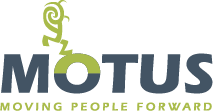Picture this: you’re in your pajamas, lounging on the couch, coffee in hand, TV playing somewhere off in the distance, and you’re clocked in and logging hours. Sounds magical, right? The ability to work remotely has emerged as a wildly attractive feature of the overall compensation package. Along with promoting a strong sense of work-life balance, flexible schedules, and paid time off, remote working can be mutually beneficial for both the employee and employer. Furthermore, research has been gathered and studies have been released to support that, if implemented and executed correctly, remote workers can outpace the performance of their in-office counterparts. That being said, if not set up properly, it can be easy to slip into bad habits. It is important to take the necessary steps to set yourself up for success so you will be set up to work effectively from home without compromising productivity, causing motivation to come to a screeching halt.
First and foremost, establish a defined workspace in the home. This is mentioned time and time again when discussing remote work, yet oddly enough continues to be a missed step. Think about it in the context of the more traditional office environment. Conversations among colleagues discussing the weekend activities, interruptions to deep concentration, and displacement from your designated workplace can all act as distractions that pull you away from the task at hand. At home, these distractions manifest themselves in background noise, such as TVs playing, or planting yourself in a high traffic area that consistently pulls your train of thought in every other direction. The goal is to designate a place removed from distraction and allows you to concentrate on your work. Helpful Hint: do not allow your workspace to be too comfortable; odds are you’ll just fall asleep.
Once you have established a productive workspace you will want to set a routine or schedule. A lot of us already do this without realizing it. We arrive at work, settle in for the morning, filter through email, and check in on active projects – all before tackling your primary tasks and objectives. The same sequence becomes habitual and is followed and relied on to chalk it up to a productive day. For remote workers, it is all the more imperative to set these routines for the mere fact that it reminds you that you are “at work.” Subsequently, it allows you to reduce the margin of distractions that will come about in a day. In addition, a set schedule provides your onsite coworkers further clarity and visibility into how to reach you and when you are available.
This leads to the next success factor: make sure to set breaks for yourself. Often times the nature of remote work can begin to feel monotonous and disengaging over time due to the consistent exposure to the same backdrop and lack of face-to-face interaction. In the workplace, there are natural signifiers throughout the day prompting you to step away from the desk and go for a walk or grab lunch. However, in the home, you will need to rely on setting these times away for yourself as part of the set schedule. Step away from your desk and go for walk, run a quick errand, or simply disengage your brain for a few minutes. Doing so will allow you to further differentiate between work life and home life and minimize the risk of burnout.
Last, but certainly not least, a successful remote employee must be a strong communicator. Technology has come a long way in aiding how effectively remote and non-remote workers can engage with each other throughout the workday. Historically, remote work was often looked at as a “unofficial vacation day,” but now we have endless communication channels for how to keep in touch. Remote workers can use email, chat platforms, phone, online hangouts, shared documents, and so forth to ensure their presence is still felt, though not physically there. However, it is the responsibility of the remote employee to ensure the lines of communication stay open. Ensure your team knows how to get in touch with you during the workday; if you step out for lunch, notify your team you are away and when you can be expected back. If you have back-to-back meetings, inform your team email communications are best. Typically over-communication can become a necessity for the remote worker, but it allows for a cleaner line of visibility and reinforces accountability.
Working remotely can be an incredibly wonderful benefit to employees, and it is a trend that doesn’t appear to be going away. Odds are we will continue to see companies recruit for positions that are exclusively performed offsite. If your employer gives the option to work remotely, flexible work arrangements can be great for retention, happiness, and productivity.







